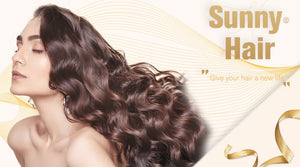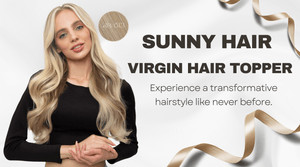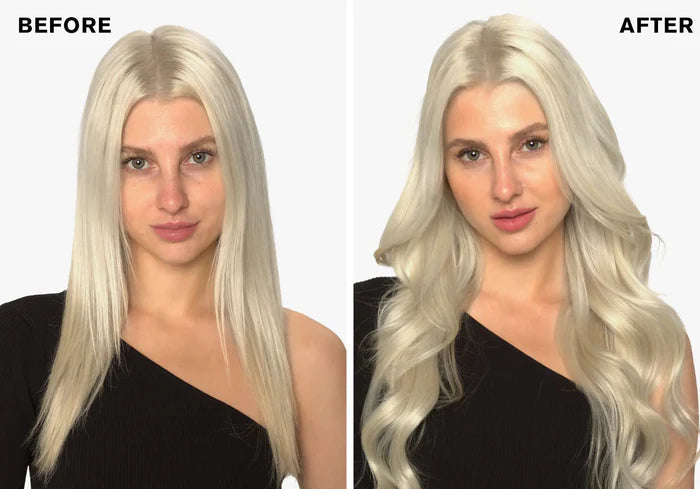Summary:
Can You Sleep in Clip‑Ins?
No. Sleeping with clip-in hair extensions can cause tangling, breakage, and scalp discomfort. Following proper care and nighttime routines can help minimize damage and extend the lifespan of both your extensions and natural hair.
Key Takeaways
- Do not sleep in clip-in extensions — always remove before bed.
- Overnight wear increases tangling, breakage, and scalp discomfort.
- Use silk/satin pillowcases, loose braids, or protective bonnets to protect hair.
- Consider halo, tape-in, or sew-in extensions for safer overnight styling.
1. Why You Shouldn’t Sleep with Clip-In Extensions
Clip-in extensions are designed for temporary wear and are not intended for overnight use. Tossing and turning at night causes friction between extensions and natural hair, increasing tangling and breakage. Metal clips pressing against the scalp for hours can cause discomfort and strain. According to the American Hair Loss Association, prolonged tension on hair roots can lead to breakage or thinning over time.
2. Potential Risks of Sleeping with Clip-Ins
- Severe Tangling & Matting: Friction during sleep can cause knots that are difficult to detangle.
- Damage to Natural Hair: Added weight and clips put tension on hair roots, potentially leading to traction alopecia or breakage.
- Scalp Discomfort: Metal clips can dig into the scalp overnight, causing irritation or headaches.
3. Safer Alternatives for Overnight Styling
To maintain style and volume overnight, consider the following:
- Remove Clip-Ins Before Bed: Safely take them out and store properly to prevent tangling and damage.
- Use Other Extension Types: Halo extensions, tape-in, or sew-in extensions are more suitable for long-term wear.
- Heatless Overnight Styling: Loose braids, silk scarves, and satin pillowcases protect hair and extensions while creating waves or volume.
4. Nighttime Hair Care Tips
- Silk or Satin Pillowcases: Reduce friction and prevent tangling. The International Hair Health Organization notes silk reduces breakage and frizz.
- Loose Braids or Twists: Keep extensions secure and tangle-free while sleeping.
- Moisture Treatments: Light leave-in conditioner or a few drops of argan/coconut oil can prevent dryness.
- Proper Storage: Detangle extensions with a wide-tooth comb and store in a silk bag or flat box away from humidity.
5. FAQs: Common Questions About Sleeping with Extensions
- Q: Is it okay to sleep in clip-ins just once?
- No. Even one night can cause tangles, matting, and scalp strain. Always remove clip-ins before sleeping to protect hair health.
- Q: How can I quickly refresh extensions after taking them out?
- Gently detangle with a wide-tooth comb, lightly mist with leave-in conditioner, and store in a silk bag to prevent tangling.
- Q: Why use a silk pillowcase?
- Silk reduces friction between hair and pillow, preventing tangles and breakage.
- Q: Are there extensions better suited for overnight wear?
- Halo extensions are easy to remove; tape-in and sew-in extensions are semi-permanent and can be protected with silk scarves or bonnets.
6. Conclusion
Sleeping with clip-in extensions is risky. Even occasional overnight wear can lead to tangling, breakage, and discomfort. The safest approach is to remove them before bed, detangle, store properly, and protect your natural hair with silk pillowcases, braids, or bonnets. For overnight styling, consider heatless curls, halo extensions, or semi-permanent options like tape-ins or sew-ins. Proper care ensures long-lasting, healthy, and tangle-free hair and extensions.
References:
Glossary / Terminology
- Clip-In Extensions: Temporary hair extensions that attach with small metal clips; easy to remove.
- Halo Extensions: A single weft on a wire that sits on the head; adds temporary volume without clips.
- Tape-In Extensions: Semi-permanent extensions using double-sided tape; last several weeks with care.
- Sew-In Extensions: Braided or sewn into natural hair; more long-term than clip-ins or halos.
- Hand-Tied Wefts: Hair wefts sewn by hand, thin and flexible for a natural look.
- I-Tip / K-Tip / U-Tip Extensions: Pre-bonded extensions; I-tip uses microbeads, K/U-tip use heat-activated keratin.
- PU Invisible Weft: Polyurethane-based weft for seamless, nearly invisible installation.
- Remy Hair: Human hair with intact, aligned cuticles to reduce tangling and maintain shine.
- Virgin Hair: Hair never chemically processed or dyed; retains natural strength and texture.
- Traction Alopecia: Hair loss caused by prolonged tension on hair roots, often from tight hairstyles or heavy extensions.
Author: Sophie Miller
Sophie Miller – Hair Extension Care Specialist
With years of experience in clip-ins, tape-ins, and hand-tied wefts, Sophie shares practical tips for washing, maintaining, and repairing extensions, helping readers extend the life of both extensions and natural hair.











